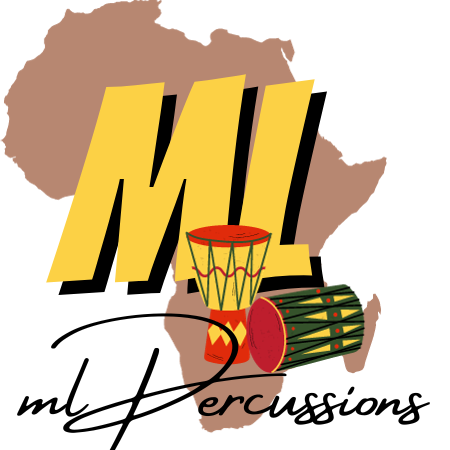6 Ways African Drumming Shapes Global Sound
Compartilhar
African Drumming in modern music has long been influenced by Africa’s deep rhythmic traditions.
From the pulsating beats of Afrobeat to the rolling log drums of Amapiano, African drumming has shaped global music trends.
Artists worldwide incorporate African beats in pop, creating infectious rhythms that dominate airwaves.
This cultural influence highlights the significance of percussion in modern music and its ever-expanding reach.

The Roots of African Percussion in Modern Music
African percussion is the heartbeat of many contemporary genres.
Drums like the djembe, talking drum, and congas have influenced various global music styles.
Afrobeat, pioneered by Fela Kuti, blends traditional Yoruba rhythms with jazz and funk.
This fusion showcases the undeniable power of African beats in pop music.
Amapiano, South Africa’s house music phenomenon, thrives on percussion-driven log drums.
This style has spread worldwide, influencing club scenes and global charts.
The cultural influence of African percussion continues to shape emerging music genres.
Percussion in modern music owes much of its vibrancy to these deep-rooted traditions.
Afrobeat’s Percussive Power in Global Music
Afrobeat’s signature polyrhythms have inspired global music icons.
Artists like Burna Boy and Wizkid infuse percussion in modern music with Afrobeat influences.
Beyoncé’s The Lion King: The Gift features heavy African percussion elements.
This growing embrace of African beats in pop signals a shift in mainstream music.
Genres like reggaeton and dancehall also borrow from African rhythmic structures.
Even Latin pop has adopted syncopated drum patterns reminiscent of African drumming.
This cross-cultural exchange solidifies Africa’s role as a rhythmic powerhouse.
The cultural influence of African percussion continues to redefine global sounds.
6 Ways African Percussion Shapes Modern Music

African drumming has left an undeniable mark on global sounds.
From pop hits to electronic beats, the percussion in modern music today reflects deep African influences.
Here are six ways African rhythms continue to shape the global music scene.
1. Afrobeat’s Global Expansion

Afrobeat’s polyrhythmic drum patterns are now a staple in mainstream music.
Artists like Burna Boy and Wizkid blend traditional African percussion with contemporary sounds.
The percussion in modern music owes much to Fela Kuti’s pioneering Afrobeat grooves.
Even global stars like Drake and Beyoncé incorporate Afrobeat rhythms into their songs.
2. The Rise of Amapiano’s Log Drums

Amapiano’s signature log drums create a hypnotic, bass-heavy groove.
This South African genre has spread globally, shaping club and electronic music.
The cultural influence of Amapiano proves how African percussion fuels new trends.
Artists like Kabza De Small and DJ Maphorisa continue to popularize its infectious rhythms.
3. The Influence on Latin and Caribbean Music
Reggaeton and dancehall borrow heavily from African drumming traditions.
The syncopated beats in these genres mirror West African rhythms.
This reflects the cultural influence of African percussion in global music.
Even artists like Bad Bunny and J Balvin infuse their hits with African-inspired beats.
4. African Percussion in Electronic and House Music

Many DJs sample African drums to create dynamic electronic music.
The rolling beats of the djembe and talking drum add organic energy to EDM.
The percussion in modern music now bridges the gap between traditional and futuristic sounds.
Black Coffee, a South African DJ, has been instrumental in this global crossover.
5. Hip-Hop’s Use of African Drum Patterns

Many hip-hop producers sample African drum loops for their beats.
Kanye West and Kendrick Lamar have drawn from African percussion traditions.
The percussion in modern music continues to shape hip-hop’s evolving sound.
This connection traces back to African storytelling through rhythm and beat.
6. Pop Music’s Growing Adoption of African Drumming

Mainstream pop now embraces African-inspired percussive elements.
Songs like "One Dance" by Drake and "Already" by Beyoncé highlight these rhythms.
The cultural influence of African drumming is evident in top-charting hits.
This trend ensures the percussion in modern music remains relevant worldwide.
Amapiano: The Future of African Drumming in Global Sound
Amapiano’s rise has redefined percussion in modern music.
Its signature log drum basslines create hypnotic, danceable grooves.
Artists like Kabza De Small and DJ Maphorisa have popularized this unique sound.
The genre’s spread across Europe and America highlights the demand for African beats in pop.
International collaborations are bringing Amapiano to wider audiences.
Major artists now incorporate these percussive elements into their hits.
This shift proves that African percussion is no longer confined to the continent.
Its cultural influence is now a global phenomenon shaping the future of music.
Conclusion
African percussion continues to shape the global soundscape, influencing genres from Afrobeat to Amapiano, hip-hop, and electronic music.
The percussion in modern music brings depth, rhythm, and storytelling, keeping African traditions alive in contemporary beats.
Its cultural influence spans generations, proving that drumming is more than rhythm—it’s identity, resistance, and celebration.

Percussion in modern music continues to evolve with African influences.
From Afrobeat to Amapiano, African drumming remains at the core of global rhythms.
The cultural influence of African beats in pop is more evident than ever.
As new genres emerge, African percussion will keep shaping the world’s soundscape.
